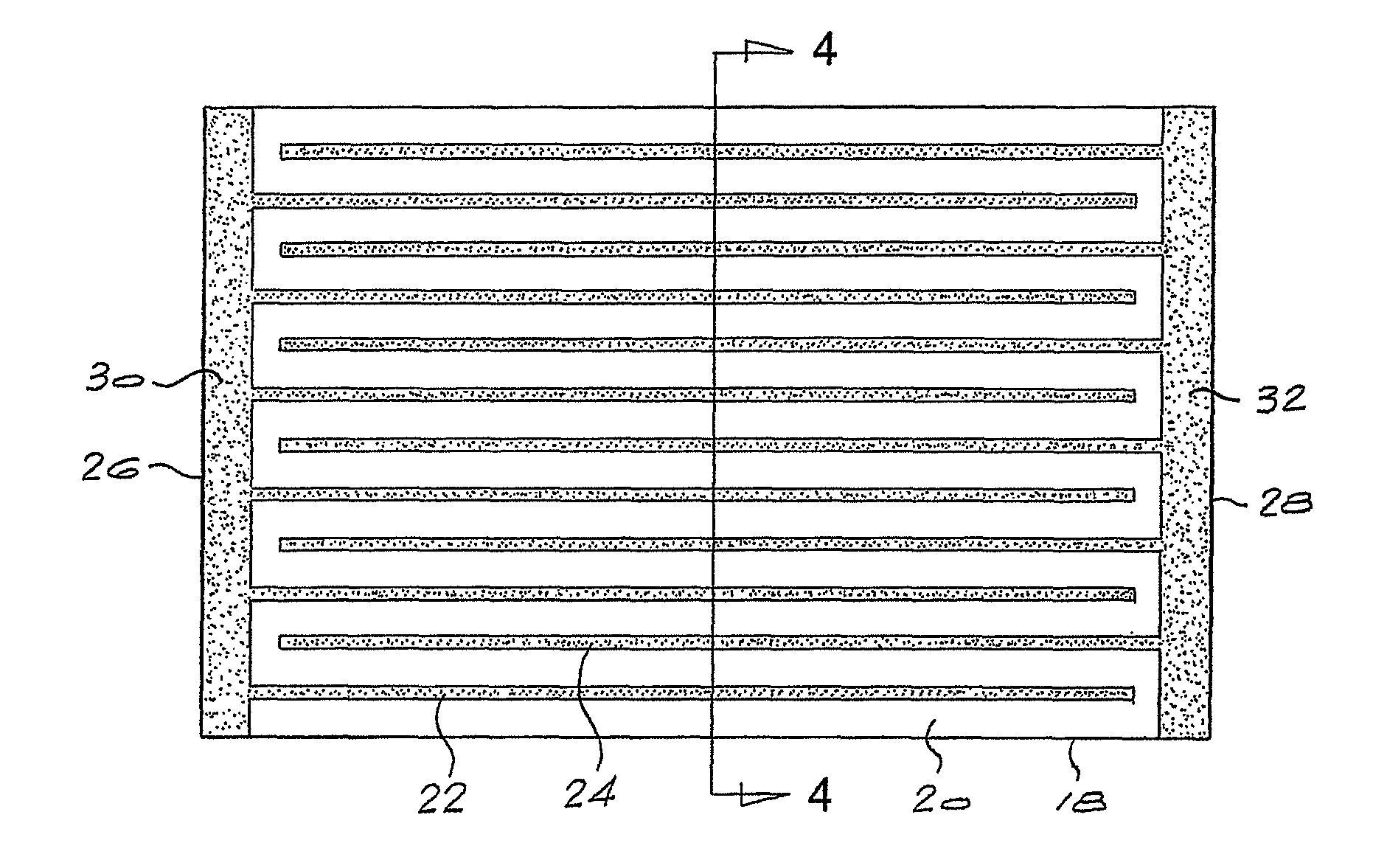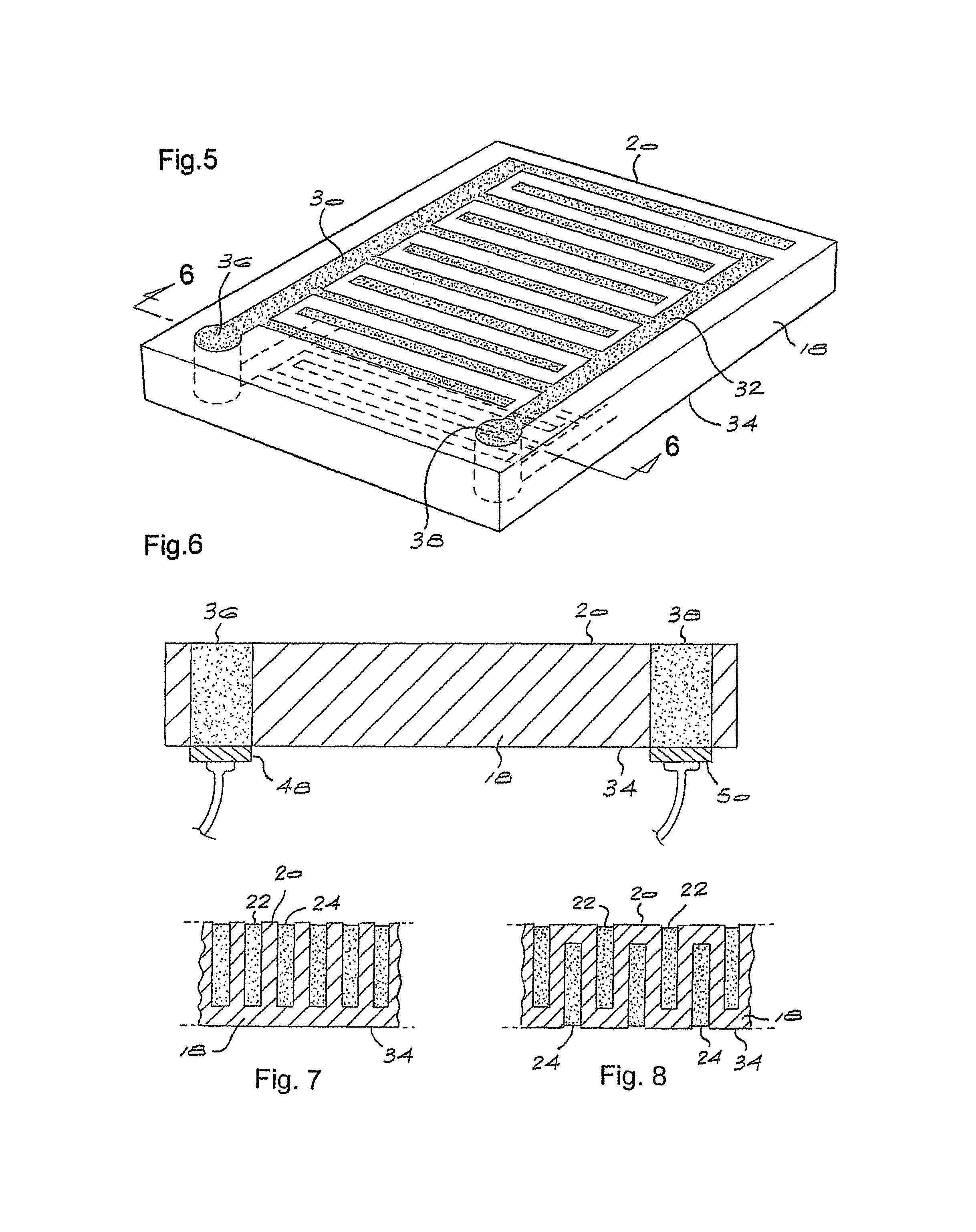Robust radiation detector comprising diamond
a radiation detector and diamond technology, applied in the field of diamond material radiation detectors, can solve the problems of insufficient robustness of silicon solid-state ionisation chambers, currently used for detection and monitoring of alpha and beta particles (or radiation), and the environment is therefore often dusty and erosive, so as to and minimise the density of surface and near-surface electronic states.
- Summary
- Abstract
- Description
- Claims
- Application Information
AI Technical Summary
Benefits of technology
Problems solved by technology
Method used
Image
Examples
Embodiment Construction
[0053]It is well known that CVD diamond can be used to detect ionising radiation (e.g. photons with energy >5.5 eV, alpha particles, beta particles, etc) through the generation of electron-hole pairs provided the diamond material has a sufficiently low number of electronic traps. What is less well known is that polishing diamond introduces sub-surface damage that can trap charge carriers below the surface. It is also not generally understood that this sub-surface damage can prevent some or even any charge generated by the ionising radiation from reaching electrodes on the diamond material, thus lowering the detector sensitivity and possibly suppressing detection entirely.
[0054]The majority of detectors reported to date rely on a simple metal electrode on the diamond surface, which can be a planar metallic pad or an interdigitated electrode structure. Either type of electrode is still affected by the sub-surface damage introduced by the diamond polishing process which is usually requ...
PUM
 Login to View More
Login to View More Abstract
Description
Claims
Application Information
 Login to View More
Login to View More - R&D
- Intellectual Property
- Life Sciences
- Materials
- Tech Scout
- Unparalleled Data Quality
- Higher Quality Content
- 60% Fewer Hallucinations
Browse by: Latest US Patents, China's latest patents, Technical Efficacy Thesaurus, Application Domain, Technology Topic, Popular Technical Reports.
© 2025 PatSnap. All rights reserved.Legal|Privacy policy|Modern Slavery Act Transparency Statement|Sitemap|About US| Contact US: help@patsnap.com



